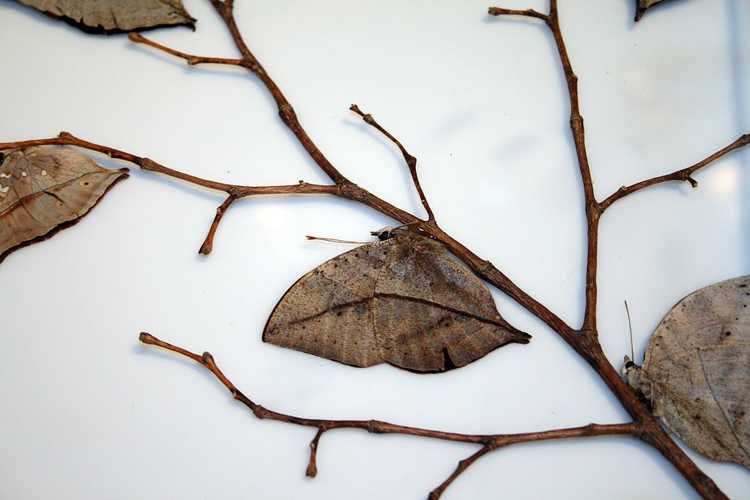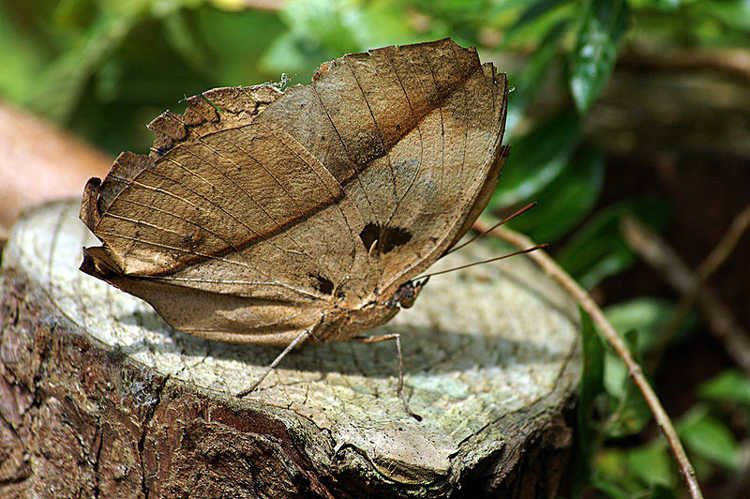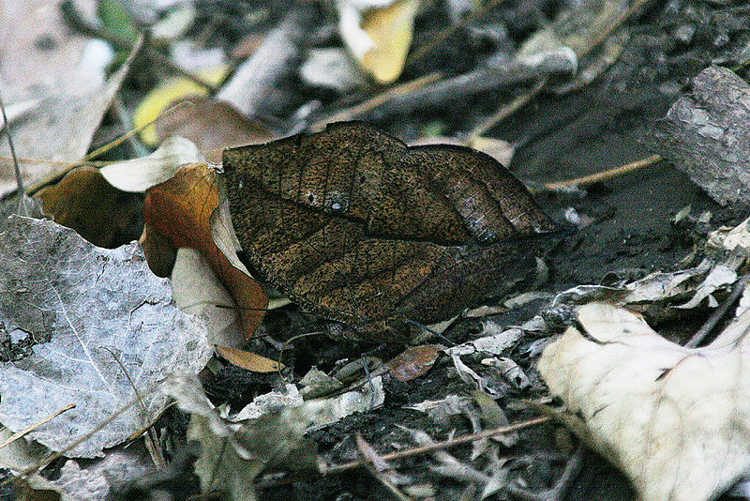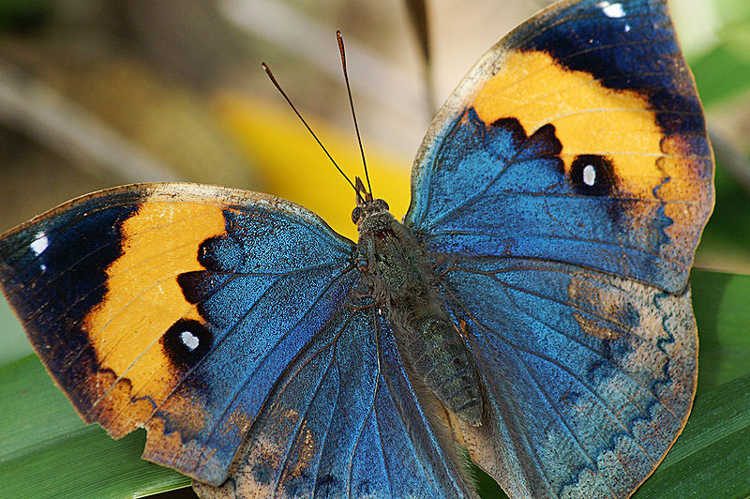Kallima inachus, a species of nymphalid butterfly found in India and Japan, is known as the orange oakleaf or dead leaf butterfly for a very good reason – with its wings closed, this butterfly closely resembles a dried tree leaf.
It’s been said that the kallima inachus butterfly mimics a dead leaf better than an actual dead leaf, and as crazy as that sounds, it actually makes some sense. Somehow, this tiny creatures managed to raise its camouflage to such an extreme level that its wings feature a pointed leaf apex at the front tip, and a leaf stalk on the hindside, as well as a characteristic vein pattern, multiple shades of brown and orange, and even tiny imperfections like black spots or small tears. It’s a perfect camouflage artist.

Photo: Noumenon/Wikimedia Commons (CC BY-SA 3.0)
Apart from putting the mimicking skills of other dead leaf imitating butterflies to shame, kalima inachus also amazes with its two distinct forms, depending on the season. During the dry season, when tropical butterflies tend to be less active, its outer wing patters are almost perfectly uniform, which offers it plenty of protection from predators, as long as it remains perfectly still.

Photo: peellden/Wikimedia Commons (CC BY-SA 3.0)
However, during the wet season, the orange oakleaf butterfly ups its game to a whole new level, mimicking an oak leaf virtually to perfection. This allows it to fool birds, spiders and other predators even when it is moving. Just as long as it doesn’t open its wings, though…

Photo: Robert Lawton/Wikimedia Commons (CC BY-SA 2.5)
This amazing butterfly has the best of both worlds. While it may look like a dead leaf when its wings are closed, when they are open, its vibrant colors rival those of the most spectacular-looking butterflies. With strips of navy blue, orange and black, the iridescent wings of the kalima inachus are quite a sight to behold.

Photo: peellden/Wikimedia Commons (CC BY-SA 3.0)
Why or how this intriguing butterfly changes between its two forms – dry season and wet season – is still a mystery, but scientists believe that it’s simply an advanced form of predator evasion. What is even more baffling is the different in size between the two forms, with the wet season one being slightly smaller.
This amazing butterfly joins the ranks of other natural camouflage masters we’ve featured on Oddity Central, including this caterpillar that looks like a snake head and this moth that has gross painting on its wings.
Sources: Australian Geographic, Chicago Botanic






